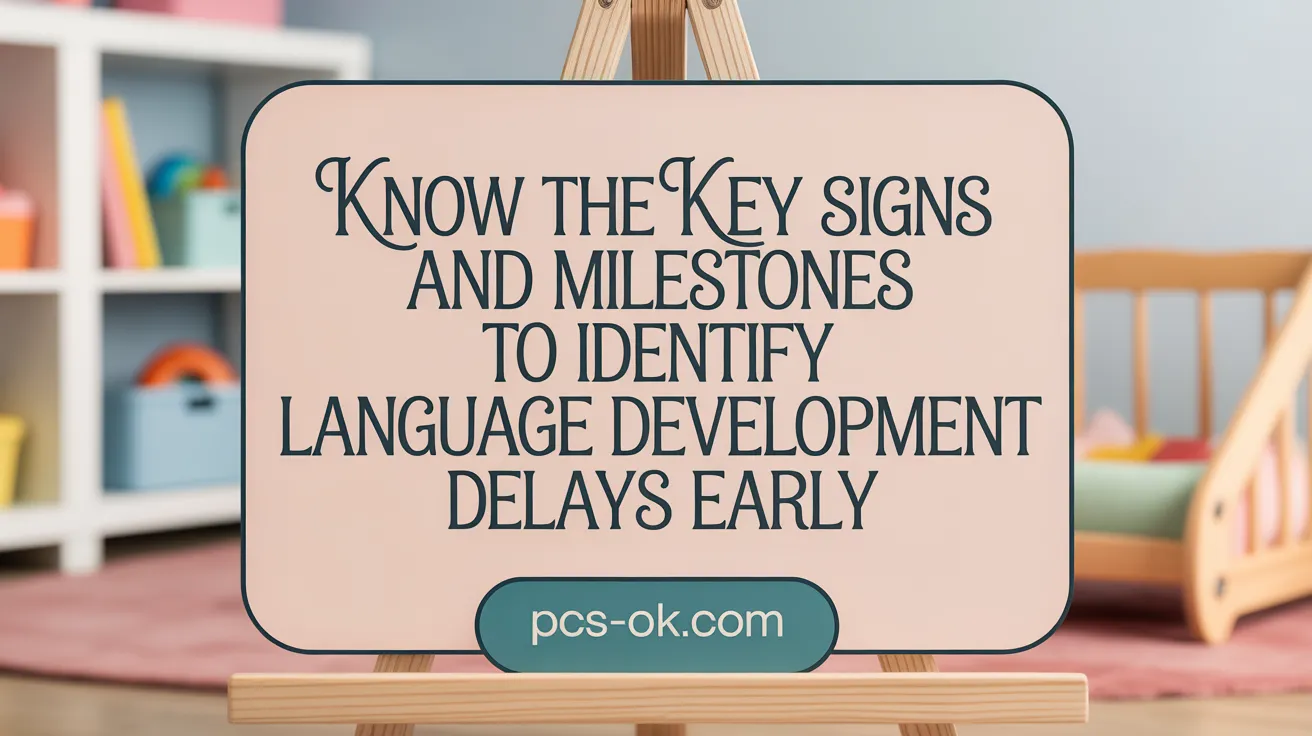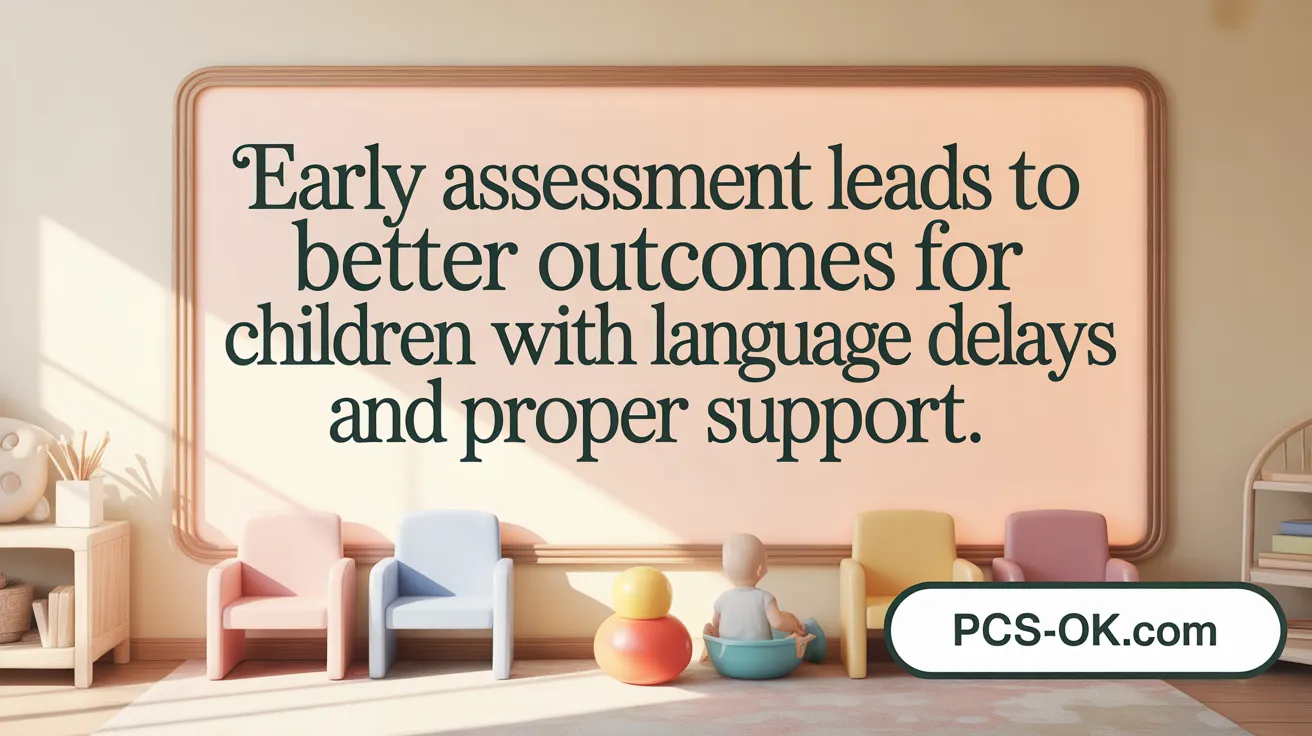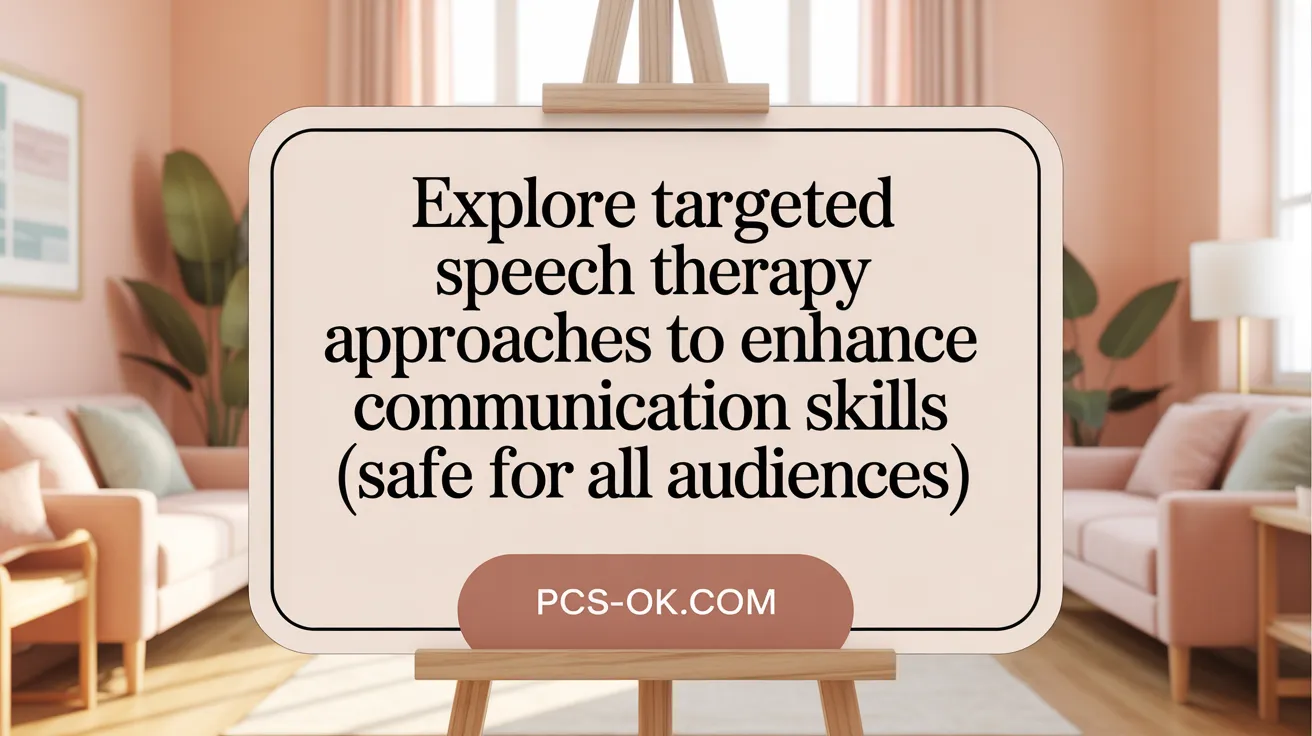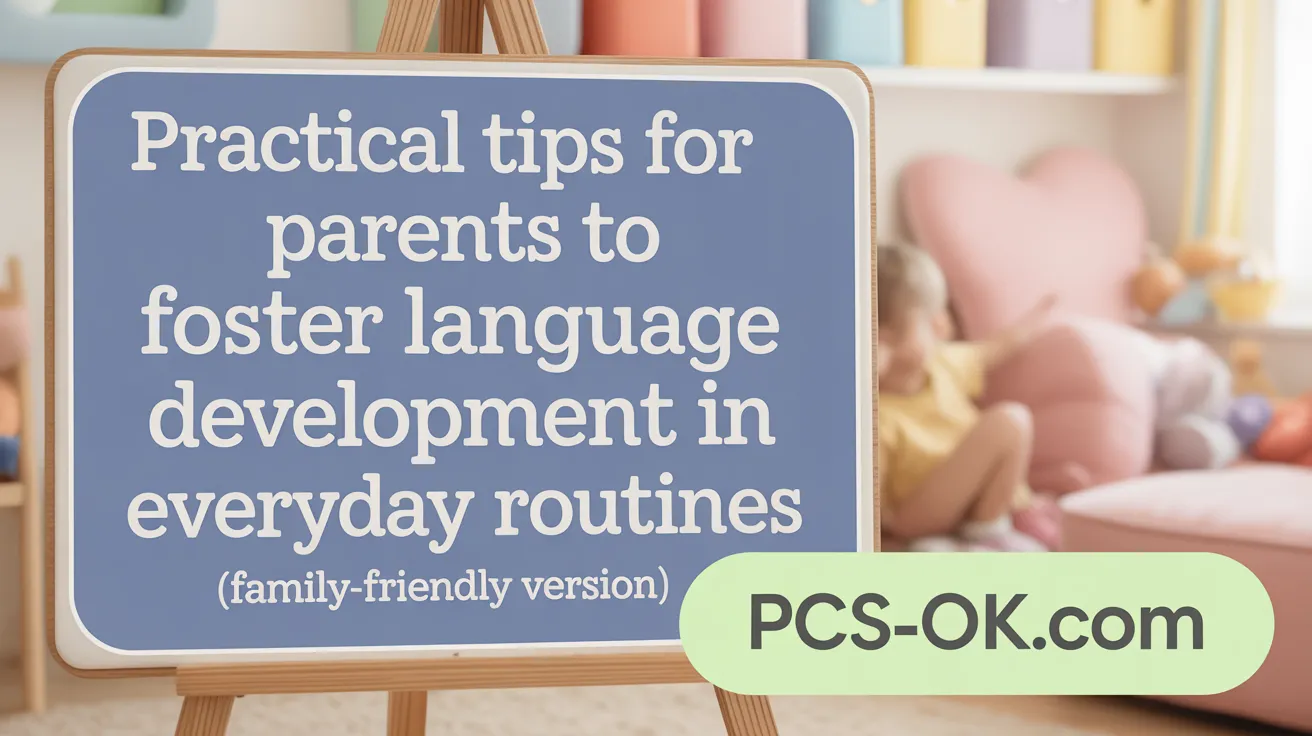Expressive Language Delays: Helping Your Child Communicate
Introduction to Expressive Language Delays
Expressive language delays affect many children, presenting challenges in communicating thoughts, feelings, and needs effectively. Recognizing this condition early and understanding its many facets—from signs and causes to therapies and home strategies—is vital for parents, caregivers, and educators committed to helping children thrive. This article offers comprehensive insights and practical guidance to support children on their journey to improved communication skills.
What Are Expressive Language Delays?
What are expressive language delays in children?
Expressive language delays refer to difficulties children face when trying to use words, sentences, gestures, or writing to communicate their thoughts, feelings, and needs effectively. These children often understand language well but struggle to express themselves clearly.
Common signs include limited vocabulary, producing short or simple sentences, and making grammatical errors. They may leave out important words or jumble sentences, making it hard for others to understand them.
These delays can impact social participation, making it harder for children to form friendships or take part in group activities. They might avoid social situations or seem shy because they find it difficult to communicate.
The causes of expressive language delays are varied and can involve developmental language disorders, hearing problems, neurological factors, or genetic influences. Sometimes, the exact cause isn’t clear.
Early diagnosis and professional speech-language therapy are vital. With targeted treatment, children can develop better language skills, enhancing their ability to interact, learn, and grow socially.
How do expressive and receptive language differ?
Receptive language is about understanding others’ spoken words, gestures, or written language. It involves interpreting meaning, following instructions, and comprehending questions.
Expressive language, on the other hand, is about conveying thoughts and ideas to others through speech, writing, or gestures.
Children with expressive delays can understand language normally but find it hard to express themselves.
What are common symptoms and associated conditions?
Signs of expressive language delay include:
- Limited vocabulary for age
- Short, simple sentences
- Challenges with grammar and sentence structure
- Difficulty in organizing and sequencing thoughts
- Trouble participating in conversations or storytelling
- Avoiding social interactions due to communication difficulties
Associated conditions may include developmental language disorder, autism spectrum disorder, hearing issues, or neurological concerns.
Supporting children with these delays involves speech therapy, home activities such as reading aloud, and creating a language-rich environment. Addressing these challenges early can significantly improve their communication skills and overall development.
| Aspect | Description | Additional Details |
|---|---|---|
| Definition | Difficulties in using spoken, written, or gestural language | Affects communicating thoughts and feelings effectively |
| Main Symptoms | Limited vocabulary, short sentences, grammatical errors | May include difficulty sequencing ideas or storytelling |
| Influencing Factors | Developmental disorders, hearing loss, neurological issues | Causes can be varied and often unclear |
| Intervention Strategies | Speech therapy, home reading, language-rich activities | Early intervention is most effective |
| Differences with Receptive | Receptive involves understanding; expressive involves producing language | Both skills are essential for effective communication |
Recognizing Signs and Developmental Milestones

What are the common signs and symptoms of expressive language delays in children?
Children with expressive language delays often display noticeable signs such as limited vocabulary for their age, making it difficult for them to express basic needs or ideas. They may struggle to form complete sentences that include correct grammar, and may have trouble naming objects or describing actions. These children might also leave out words, use fillers like ‘um’ or ‘uh,’ and find it hard to tell stories or recall specific words.
As they grow, these signs can become more apparent with vague language, short responses, and withdrawal from social interactions. Early indicators generally appear between 18 months and 3 years old. For example, a child who does not use gestures by 12 months or fails to combine words by age 2 may signal an expressive language delay. Overall, these children have difficulty communicating their thoughts, leading to frustration and possibly affecting social participation or friendships.
What are the typical expressive language milestones from birth to five years?
Children generally reach important expressive language milestones between birth and five years old. By around 12 months, most babies say a few familiar words and begin imitating sounds, sometimes saying ‘mama’ or ‘dada’ early on. Between 18 months and 2 years, children’s vocabularies expand to roughly 50 words, and they start combining words into simple phrases, like ‘want cookie’. They can also usually answer basic questions, such as pointing to objects or repeating simple phrases.
From ages 2 to 3, children develop longer sentences, improve pronunciation, and use approximately 800 words. They begin asking questions and engaging in more complex conversations. By age 4 to 5, their language skills include storytelling, using more complex sentences, and expanding vocabulary beyond 1000 words. They can describe experiences, participate in conversations, and express ideas with greater clarity.
While variations are normal, delays in achieving these milestones may indicate a need for evaluation by a speech-language pathologist, to ensure appropriate support and intervention.
Importance of parents’ awareness
Parents play a crucial role in early detection of expressive language delays. Being aware of the typical developmental milestones helps them identify when a child might need professional assessment. Regularly engaging in activities such as reading aloud, chatting, and naming objects enriches language exposure. Recognizing early signs allows for timely intervention, which can significantly improve communication skills and reduce frustration.
Understanding these milestones enables parents to support their child’s language development actively and seek help when milestones are not met. Early support through speech therapy and home activities tailored to their child’s needs can lead to better social and academic outcomes.
Understanding the Causes of Expressive Language Delays

What causes expressive language delays in children?
Expressive language delays can stem from a mix of medical, neurological, genetic, and environmental factors. These delays are often linked to hearing impairments, such as recurrent ear infections or more severe hearing loss, which hinder a child’s ability to process spoken words.
Neurological conditions that affect brain development or function, including disorders like autism spectrum disorder or intellectual disabilities, also play a significant role. In some cases, genetic predispositions—such as family history of speech and language issues—can increase a child’s risk.
Medical issues such as oral-motor impairments, a short frenulum (tongue-tie), or physical problems with the mouth can interfere with speech production. Environmental factors like limited exposure to a language-rich environment, fewer social interactions, or lower parental education levels contribute as well.
Children with developmental disorders often experience additional challenges, making early diagnosis and intervention crucial. Protective factors that can promote better outcomes include engaging in shared activities, early language stimulation, and having a supportive, language-rich home environment.
While in some cases the cause of expressive language delays may remain unknown, early assessment by speech-language pathologists helps identify contributing factors and guides effective intervention strategies.
Assessment and Diagnosis: Path to Understanding

How are expressive language delays assessed and diagnosed?
The evaluation process for expressive language delay involves thorough assessments conducted by trained speech-language pathologists (SLPs). These professionals gather detailed developmental histories by interviewing parents and caregivers to understand the child’s language exposure and milestones.
During the clinical assessment, SLPs observe the child’s speech and language behaviors, noting how well they form sentences, use vocabulary, and follow social norms of communication. Standardized language tests play a vital role, providing quantitative data to compare the child’s skills with typical development benchmarks for their age. A score at least one standard deviation below the average usually indicates a delay.
Beyond testing, the evaluation examines critical developmental markers such as gesture use, vocabulary growth, sentence complexity, and social interaction abilities. It’s essential to rule out other conditions like hearing impairment, autism spectrum disorder, or neurological issues, which can sometimes mimic or contribute to language delays.
To confirm a diagnosis, additional assessments may include hearing screenings, language sampling in naturalistic settings, and observation of social communication. Collecting this comprehensive information helps create an accurate picture of the child’s language abilities.
Early detection is crucial. When identified promptly, tailored speech therapy can significantly improve expressive language skills, fostering better academic performance and social interactions as the child grows.
This diagnostic process ensures children receive appropriate interventions aimed at reducing frustration and supporting effective communication development.
Effective Treatment Options for Expressive Language Delays

What treatment options are available for children with expressive language delays?
Children with expressive language delays benefit significantly from targeted speech-language therapy. Conducted by qualified speech-language pathologists, these therapy sessions focus on improving specific language skills that children struggle with, such as expanding vocabulary, forming complete sentences, understanding and applying grammar rules, and mastering sequencing of ideas.
Therapists often use engaging and interactive activities like educational games, storytelling, role-playing, and craft projects to make learning fun and effective. These methods help children practice the different aspects of language in a natural setting, encouraging them to communicate more clearly and confidently.
Early intervention plays a crucial role. When therapy starts at an early age, it can prevent or lessen long-term social, emotional, and academic challenges. Additionally, family involvement is vital. Parents are encouraged to participate in therapy through home activities and everyday strategies, such as reading aloud, modeling correct language, and creating language-rich environments.
Before beginning treatment, a comprehensive assessment by a speech-language pathologist is necessary. This evaluation helps design a personalized plan tailored to the child’s unique needs, often incorporating structured programs and steps to progressively improve communication skills.
Overall, a combination of professional therapy, family support, and consistent practice can greatly enhance children’s expressive language abilities, laying a strong foundation for successful social interactions and academic growth.
Strategies for Parents and Caregivers to Support Language Growth at Home

What strategies can parents and caregivers use to support children with expressive language delays at home?
Supporting children with expressive language delays requires engaging them in everyday activities that promote communication and language development. Routine activities like reading stories, singing songs, and describing what you are doing help children learn new words and sentence structures.
Using visual aids such as picture cards, gestures, and sign language can assist children in making meaningful connections between words and objects or actions. This visual support makes it easier for children to express their needs and ideas.
Breaking down language tasks into simple, manageable steps encourages children to practice specific skills, like answering questions, using pronouns, or forming basic sentences. Concentrated activities, such as asking them to name objects or describe what they see, are effective in building vocabulary and sentence length.
Responsive interactions are essential. When a child attempts to speak, parents should expand on their attempts or model the correct structure. For example, if a child says “ball,” a parent might respond with “Yes, that’s a big, red ball!” this reinforces language use.
Incorporating play — like role-playing, storytelling, or interactive games — stimulates language and social skills. Giving choices (“Do you want the apple or the banana?”) encourages children to use words in natural settings.
Early guidance from speech-language therapists can optimize these strategies. Therapists may provide tailored activities that target specific language needs, making home practices more effective.
Overall, creating a rich language environment that invites children to listen, observe, imitate, and practice speaking is vital. Consistent, positive interactions foster confidence and motivate children to communicate more effectively.
Role of Educators and Resources for Families
How do educators support children with expressive language delays?
Educators are crucial in nurturing children with expressive language delays. They foster a language-rich classroom environment by incorporating visual aids, conversation routines, and interactive activities that stimulate communication. Teachers work closely with speech-language pathologists to implement tailored strategies suitable for each child’s needs, ensuring consistency across different settings.
In practice, educators employ methods like multisensory teaching, role-playing, and explicit instruction in social skills such as turn-taking and asking questions. These approaches help children practice expressive language in a supportive setting.
Beyond classroom techniques, teachers play an essential role in guiding families. They educate parents about developmental milestones, red flags, and suggest engaging activities that promote language growth at home. When teachers and parents collaborate, it creates a robust support system that can accelerate a child’s language development and boost their confidence in social interactions.
What resources are available for families to improve children’s communication skills?
Families seeking to improve their child’s speech and language skills can access numerous helpful resources. Licensed speech-language pathologists provide specialized therapy tailored to each child’s unique challenges. Early intervention programs, such as the It Takes Two to Talk, offer parent training to integrate language-building activities into everyday routines.
Parents can also utilize educational websites, books on language development, and digital tools designed to promote communication. Participation in support groups connects families with others facing similar challenges, providing emotional support and practical advice.
Healthcare providers generally recommend regular developmental screenings during well-child visits to detect early signs of delays. If a delay is identified, government-funded programs can provide free or reduced-cost therapy services, ensuring children receive timely help.
Resources at a glance
| Resource Type | Description | Benefits |
|---|---|---|
| Speech Therapy | Provided by licensed professionals, tailored to individual needs | Direct intervention, skill development |
| Parent Training Programs | E.g., It Takes Two to Talk | Empowers parents, hands-on strategies |
| Educational Websites & Apps | Various online tools and books | Supplement therapy, practice at home |
| Support Groups | Community or online groups | Emotional support, shared experiences |
| Government Programs | Free or income-based early intervention services | Early diagnosis, timely treatment |
Supporting children with expressive language delays involves a team effort. Educators and families collaborating and utilizing available resources can make a significant difference in a child’s ability to communicate effectively, participate socially, and thrive academically.
Supporting Your Child’s Communication Journey
Expressive language delays present challenges but can be effectively addressed through early recognition, assessment, and intervention. With the combined efforts of speech-language professionals, educators, and engaged families using practical strategies and available resources, children can develop stronger communication skills and gain confidence. Creating a nurturing, language-rich environment at home and school is key to helping children express themselves clearly and participate fully in social and academic life. Awareness and proactive support empower children with expressive language delays to unlock their potential and enjoy meaningful interactions throughout their development.
References
- Expressive Language Delay Resource Page
- How to Support Your Child’s Expressive Language | CCA
- Delayed Speech or Language Development
- Understanding expressive language disorder in your child
- Expressive Language (Using Words and Language)
- Understanding Expressive Language Disorder
- Childhood Spoken Language Disorders
- Receptive Language Disorder Strategies to Improve Speech
